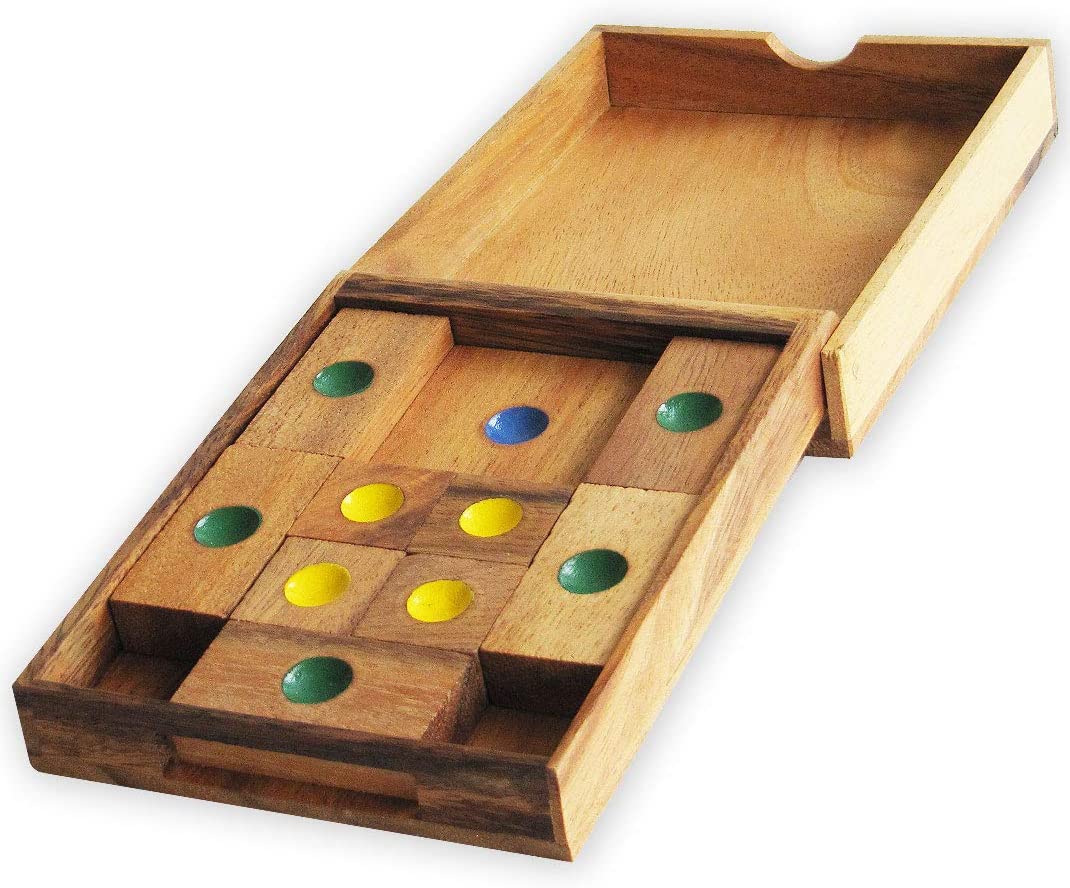
Klotski Puzzle
Klotski (from Polish: klocki, ‘wooden blocks’) is a sliding block puzzle that is assumed to date from the early twentieth century. The name might apply to a specific ten-block layout or, in a broader sense, to a group of related sliding-block puzzles in which the goal is to transfer a specific block to a predetermined spot. Lim Kai Yi, a Malaysian speedsolver, set the current Guiness World Record for the “Fastest time to Solve a 4×5 Klotski” puzzle on January 23, 2021, with a time of 6.315 seconds.
Components:
- wooden board
- sliding pieces
Working Principle:
Several different-sized block pieces are placed inside a box, which is generally 45 in size, just like other sliding-block puzzles. There is one special block (typically the largest) that must be transported to a specific spot defined by the game board. The player can only slide blocks horizontally and vertically and cannot remove them. The goal is usually to solve the puzzle in the shortest length of time or with the fewest number of moves.
Klotski was first mentioned in a computer version for Windows 3.1 created by ZH Computing in 1991, which was also included in the Microsoft Windows Entertainment Pack. For decades, the sliding puzzle had been branded and sold under several names, including Psychoteaze, Square Root, Intreeg, and Ego Buster. Before Klotski, there was no commonly accepted name for the type of sliding puzzles described.
Rules
- A piece may only move vertically or horizontally into an empty space next to it.
- If there are 2 empty spaces in given direction, the given piece may move 1 or 2 spaces (each case counting as 1 move)
- Only the slim piece can go through the door.
Solving
If you consider sliding a single piece to any reachable location to be a single move, the smallest number of moves for the original puzzle is 81, which is proven by computer to be the absolute minimum for the default beginning arrangement.
Martin Gardner reported the initial 81-step solution in the February 1964 issue of Scientific American.
There are several variations of this game, some with names related to certain countries’ cultures, and others with different block arrangements.
It’s yet unclear whether and how these differences interacted.
Some algorithms like A* and Dijkstra are suitable to solve these type of problems using a computer.
Instructions:
- Try moving the pieces following the rules
- Count the number of moves
- Register the number of moves it took you to solve the puzzle
- Optionally count the time it took you to solve it
Links:
https://www.amazon.co.uk/SiamMandalay-Setting-Sun-Handmade-Pictured/dp/B01FQXX23C